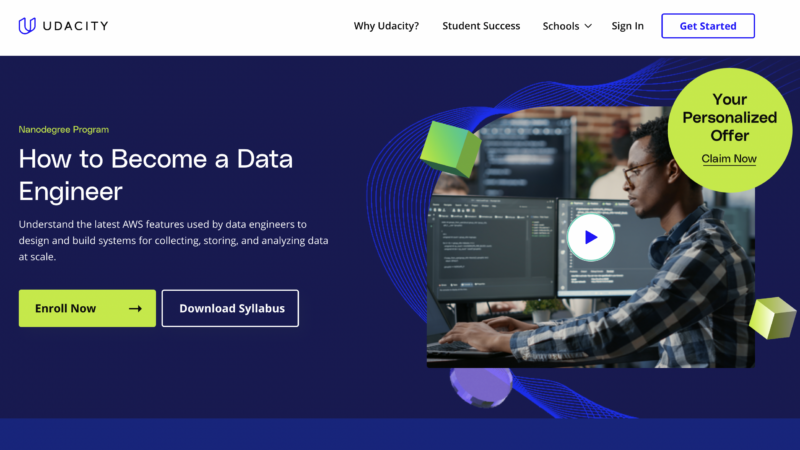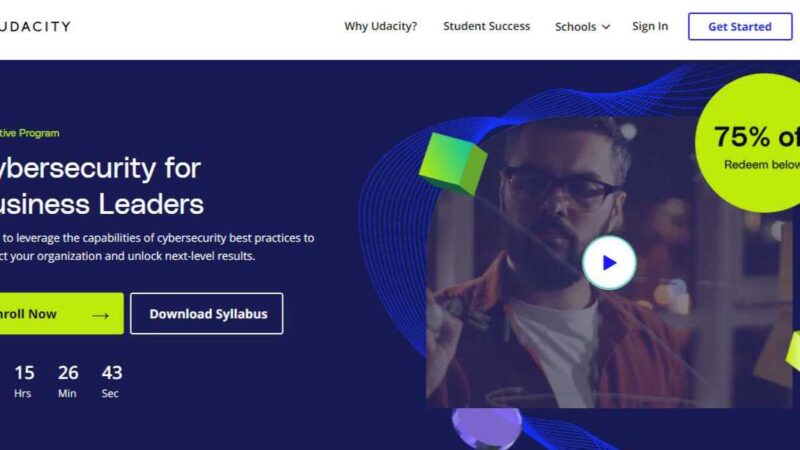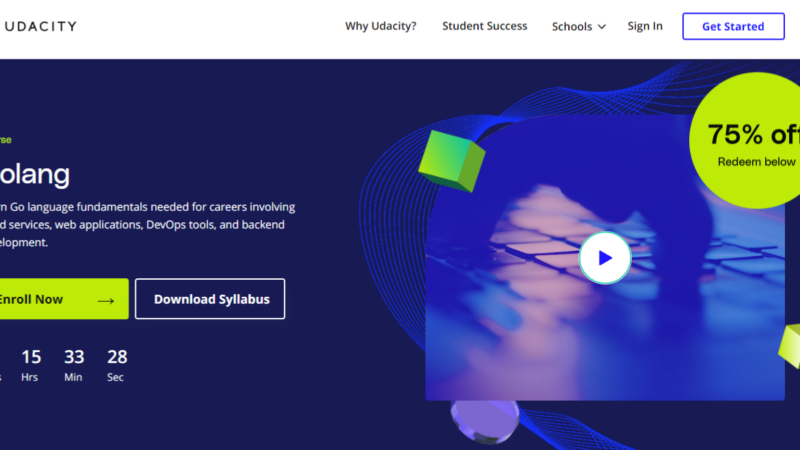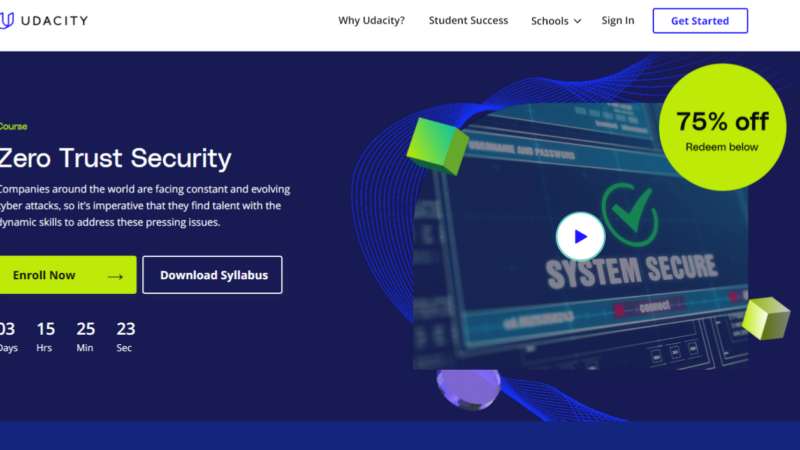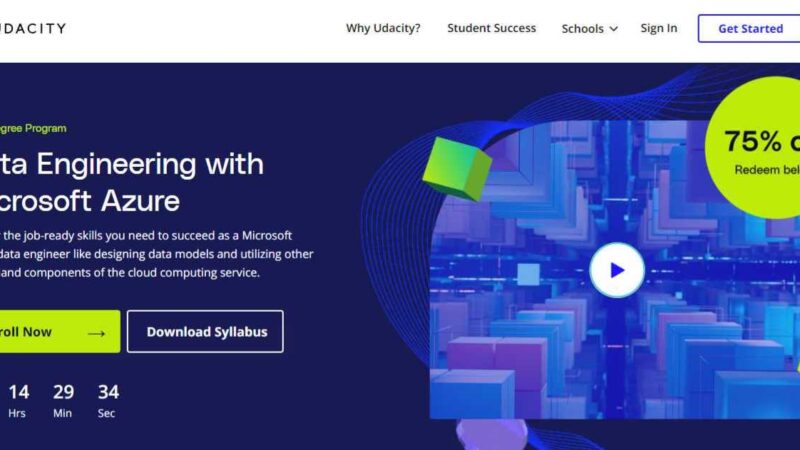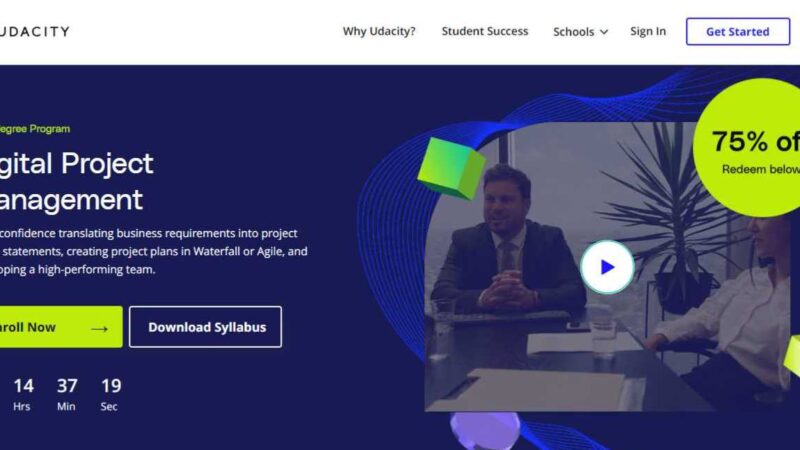Udacity Cloud Native Application Architecture Nanodegree review

Due to the vast in technology, organizations and enterprises are willing to adopt the latest technologies to upgrade their organizations. Several technologies are leveraging to support organizations to deliver more optimal solutions. Although, the corporate companies are still lacking around to ensure higher productivity. Thus, they are searching for some candidates in the crowd who are skilled with these new technologies. Organizations are looking for effective, efficient, and productive solutions to increase the growth of their business. Cloud-Native Application Architecture enhances productivity and efficiency, collaborating with the IT team for creating the customized modular infrastructure. The organizations are looking for someone proficient in designing architect’s solutions and meet the customer requirements. Cloud-Native Applications have multiple benefits associated which leverage the business to increase productivity under-defined secured environment. Due to the core principles of Cloud-Native Applications, the enterprises feel the flexibility to deploy their products. These core principles allow the enterprises to build more dynamic apps, increase agility. Cloud-Native applications bring a modular architecture for running and updating the applications. It uses microservice architecture as compared to monolithic architecture. Cloud-Native applications use various cloud services like AWS, EC2, Lamba, S3, etc. Organizations are referring to microservice architecture as compared to monolithic architecture. Because of microservices architecture, the DevOps team can work flexibly on particular components. Even skilled architects can add new features to each piece without compromising scalability.
Udacity brought into reference all the courses that are essential to learning. The participants who are interested in designing software architects for the organization. You can approach Cloud-Native Technology. Udacity sources multiple courses based on technical as well as management courses. The newly emerging technologies like IoT, DevOps, Cloud, etc are some in-demand skills that companies are searching for. If you are seeking a job in the technical domain, but are unable to find your way, then read the entire article briefly. Udacity Cloud-Native Architecture Application Nanodegree Program aims to train the students with some real-time knowledge about Cloud.
About Udacity
Udacity is an effective e-learning platform that holds multiple courses and nanodegree programs and provides learners the flexibility to learn these courses and graduate at their schedule along with effective benefits. It is a well-reputated edtech platform in collaboration with MNCs, Microsoft, Google, and other well-reputed universities. Each course or nanodegree program provides additional perks like technical support, student community support, career services, and many more.
You will get to know more about the entire course throughout the contents. Also, you can decide whether this Udacity Cloud-Native Architecture Application Nanodegree Program is worth an investment for your future, a career as well as money.
What is this Course About?
This course focuses on understanding the growing demand for Cloud-Native Architects and trains the candidate to build, deploy, manage and run cloud-native applications within less time. The course explains briefly about the components, and essential concepts like Docker, Containerization, Deployment, and much more sourcing ahead. Beginning with a brief introduction to Cloud-Native Fundamentals, it further continues explaining Message Passing along with refractor microservices, Observability, some Kubernetes concepts, and ending with Microservice Security.
Course Curriculum
Before beginning with the course curriculum, you must be aware of some prerequistes. This course is made for intermediate candidates who have knowledge about the following concepts:
- Basic concepts of HTTP requests like client site, server site, and internet.
- Should have knowledge of basics Python Programming languages like functions, data types, Web development, REST requests.
- Basic knowledge of Git, Linux, and Linux Command-Line.
- Understanding in detail the Web Application development irrespective of language.
- Should be familiar with other concepts like Docker, CI/CD pipeline.
Cloud-Native Fundamentals
In this course, students will first learn about the structure, package, and release of the application into a Kubernetes cluster. Students can try this practically using an automated CI/CD pipeline. Firstly, in this section, the students will build their development practices and then deploy them using Docker, later distributing them over Dockerhub. The students can explore Kubernetes resources and how these resources can be used for deploying the application. This section clears the doubt of the students and provides the capacity to build applications on k3s to bootstrap and even explore the functional Kubernetes cluster. The section even teaches some important concepts relating to template configuration such as Helme and implements the parameters of Kubernetes declaring manifests. At the end of the section, the learners can get a grasp on the fundamentals of Continuous Delivery and Continuous Integration. Github and ArgoCD automate the release of applications.
Message Passing
In this section, students will learn about microservice architecture, how to redesign microservices architecture from monolithic architecture. They can even employ the creation of different forms in message passing. The students learn to create microservice strategies to gain a service from a monolithic architecture into a microservice one. The students will learn and implement the best practices required for message passing in service architecture. This section focuses more on teaching students to design forms to implement message passing and develop production systems.
Observability
This section explains in detail the term observability as a parameter in the fundamentals of the distributed systems. Kubernetes have widely been used in developing Cloud-Native Applications, especially in a distributed system. The term observability is preferably used to monitor and observe the performance of Kubernetes clusters and the applications hosted over them. This application teaches to observe the three key aspects that are data collection, application tracking, and visualizing the results. Through this course, students can learn to collect data performance using Prometheus, collect application tracking using Jaeger, and visualize the results using Grafana.
Microservices Security
In this section, the students will gain knowledge about hardening Docker and Kubernetes microservice architecture. The STRIDE threat model you will learn along with the reason for microservice security. The learners will deep dive into exploring Docker as well Kubernetes concepts. This section teaches to prevent attacks via Kubernetes attack surface. It introduces open-source industry tools like Docker-bench and Kube-bench that evaluate the harden Docker and weaken Docker. There are tools like Trivy and Grype that students can use to analyze software composition, evaluate the image layers, and find software vulnerabilities. In the end, of course, the students will be able to observe runtime security applications and learn to respond to security incidents. It introspects the microservices and other security signals.
Projects Assigned
After completion of every section, there are projects assigned that are required to e completed and submitted for review. The experienced mentors start reviewing the projects. If there’s any rectification required, then the project is reverted back to the candidate for correction. This cycle goes on until the project is fully fledged. The first assigned project is Tech trends. In this project, the students will get to learn how to create a package and store it in the form of a Docker image. The next project assigned after the completion of the second section, the next project assigned is Refactor Udaconnect. In this project, the students have to focus on networking at conferences and trade shows. On completion of section third, the next project assigned is Building a metric dashboard. Well, in this project, students will be able to perform application tracing, visualize the data, and install the basic tools for carrying out these tasks. At the end of the entire course, the final capstone project needs to be delivered. In this capstone project, the students will implement their knowledge about packages, Docker images, tools for cloud-native applications. With this project, the students will get to learn practically to implement cloud-native applications along with specific tools.
Instructors for this course
- Katie Gamanji is well-experienced in the field of Cloud-Native Applications. She has been working over end-user communities and bridges the gaps between other ecosystem units. Katie has past experience building out cloud-native platforms and working with open-source tools. She has been working as Ecosystem Advocate for Cloud Native Computing Foundation.
- Justin Lee is working as Data Platform Engineer at Stitch Fix. He has been working on various platforms scalable systems for fortune 500 companies. He has completed a BS in Computer Science from UCLA. He has experience in working as a mentor developer along with Codementor.
- Nick Reva is working as Engineering Security and Technical Manager at Snapchat. With 14+ years of experience, Nick is currently working as a team lead that guides the team for developing highly scalable security services in the cloud-native environment for companies like SpaceX and Snapchat.
- Jay Smith is working as an App Modernization Specialist at Google Cloud. Jay has 15+ years of experience in building cloud-native technologies and open source tools. Currently, Jay helps Google customers to deploy cloud-native applications.
Udacity’s Additional Perks added in Cloud-Native Application Architecture Nanodegree Program.
The program offerings include additional perks that Udacity provides along with the course. These are Class content, students services, and career services:
Class Content
The class content offers real-time projects, project reviews, and project feedback from mentors.
- Work on real-time projects: In this Udacity Cloud-Native Application Nanodegree program, it partners with tech companies to masters your tech skills. The experienced mentor guides the learners to work on real-time projects to get some corporate experience.
- Project Reviews: The mentors who are technically strong review the projects after the submission. Later, the mentors suggest their reviews or comments on the given submitted projects. The proposed projects are evaluated in the loop by several experienced mentors. The mentors leave their feedbacks in the loop about the project.
Student Services:
Udacity brought terrific facilities for students like Technical Mentor Support and the Student community. These two support systems are always available to answer your queries, if any.
- Technical Mentor Support:
The learners will be assigned mentors who are technically strong enough to clear the doubts while completing the project if you get any queries or get stuck between the project. Then you can approach the technical mentors and get your questions resolved. Along with this, you will also learn from your mistake.
- Student Community:
The improved feature added in Udacity Cloud-Native Application Architecture Nanodegree Program is Student Community. The student community is specially made for students because sometimes, due to some issues, there’s a possibility where technical mentors might be unable to answer your query. At that time, you can post your questions to this student community. Any other student who came across the same issue may resolve this issue.
Career Services
Udacity has added career services to this nanodegree program. The career services include Resume support, GitHub profile set up, and LinkedIn Optimization.
- Resume Support: To land your dream job, the first important thing is to design a resume. Udacity has arranged special training sessions for the learners in which the experienced mentors will train the learners and help them create their resumes. Also, if the learners have already prepared their summaries, then the trainer reviews the resume and suggests changes if any.
- GitHub Profile: To enter the corporate world, you need skills, a strong resume, and having a Github profile acts as the cherry on the cake. Hence, whatever projects you make can upload on Github. This showcases your skills in front of the interviewer.
- LinkedIn Profile: Having a LinkedIn profile positively impacts your career. In the corporate world, there is a lot of competition for the job. Hence, to land your dream job, it is essential to build a strong LinkedIn profile because there are chances that the company’s HR might approach you looking at your profile if you had applied for the job role.
Pricing
Udacity Cloud-Native Application Architecture offers decent pricing with easily payable EMI options. Udacity has designed its courses with relevant content as well adds plenty of helpful services. The system provides a price starting from 446 USD dollars for four months of access. The monthly cost for the same course is 160 USD dollars. You can anytime cancel the course. Also, if you take the four-month access course, you can even switch to the monthly price. To complete this course, students take time of 4 weeks.
Testimonials:
I attended this course a few months ago because I wanted to develop cloud-native applications architecture. I learned cloud fundamentals, message passing concepts, observability, and microservice security concepts in this course. Even I gained hands-on experience working on projects. Udacity’s excellent career services, as well as student service, have cleared my queries. This course helped me a lot in accomplishing the tasks assigned. I felt this course is worth investment and gain good knowledge.
